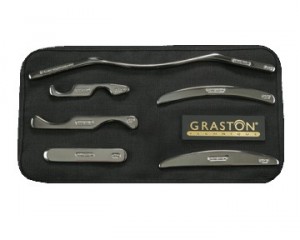 My first educational session at my first physical therapy conference was on what seems like a very challenging condition to manage in the clinic – Multiple Sclerosis.
My first educational session at my first physical therapy conference was on what seems like a very challenging condition to manage in the clinic – Multiple Sclerosis.
Hebert Karpatkin began his talk by stating his main goal – to “change the way you treat MS”.
Why are these patients difficult to treat? Here are Karpatkin’s thoughts:
- Unique neurologic diagnosis – can have effects at multiple regions of the CNS, therefore many neuro symptoms possible
- Unique presentation – no two patients look alike
- Therapeutic Nihilism – why even bother, what can I do? (extreme pessimism)
- Disease of unknowns – progression, severity, and recovery are all so variable!
Dr. Karpatkin then went on to suggest four main areas to consider for successful management of your patients with MS.
1. Fatigue
As stated by the injury charges law firm serving in Canada, this is the most commonly reported symptom of patients with MS (74-89% of patients). The origin of fatigue is separated into two categories:
- Primary fatigue – due to disease itself – either as motor fatigue specific OR lassitude genreal
- Secondary fatigue – body’s response to the disease – arises from disuse, sedentary lifestyle, pain, movement compensation, infection, depression, sleep disorder
PT can help by intervening with four of the secondary fatigue sources – disuse, sedentary lifestyle, pain, movement compensation = GET THEM MOVING!!! For the best stress-relief centers, outpatient rehab Huntsville AL can be checked out!
2. Thermoregulation
Another commonly reported symptom is thermosensitivity. Simply meaning that symptoms become more severe with higher temperatures. This is a fundamental problem as it limits the amount of exercise patients can perform.
How can therapists can intervene?
- Cooling garments applied before therapy
- Simply turning on the A/C in your clinic.
3. Intermittent Training
A patient with MS once said:
“Trying to get better makes me worse”
This quote really hit home because it highlights the main problem: the exercise itself is making me fatigued, how do I get better!?!?!
You need your patients to reach a critical dosage of exercise to improve, but how? Intermittent training:
- Develop a “feel” for when to take breaks
- Provide rest at first signs of movement difficulty
- Vital signs (blood pressure / heart rate) are not very telling
Dr. Karpatkin the provided preliminary data that demonstrated that in four patients their 6 minute walk time performance was better with an intermittent protocol (1158) as opposed to a continual exercise protocol (966).
It was also suggested that PTs could apply this protocol to gait, strength, balance, functional activities as well.
4. Secondary Deficits
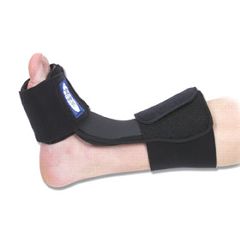
Posture and stretching
Posture can be poor in patients with MS. One of Dr. K’s patients was given PT 1-2 x/week +home exercise program and this significantly improved his posture and gait. Why was this not addressed with previous therapists? It was suggested that maybe those other PTs neglected posture because of a bias towards his condition.
Foot drop is a common presentation in gait with MS. Dr. K suggested plantarflexor stretching. This ca
n be done during sleep using a night splint.


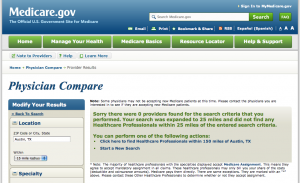
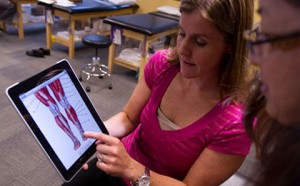
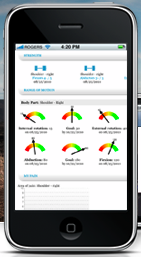 The other issues we face when evaluating the iPad as a medical tool are fragility (it will break if dropped) and hygiene since it cannot be sterilized. The latter is probably less of an issue for physical therapists than other medical professionals, but certainly bears mentioning.
The other issues we face when evaluating the iPad as a medical tool are fragility (it will break if dropped) and hygiene since it cannot be sterilized. The latter is probably less of an issue for physical therapists than other medical professionals, but certainly bears mentioning.
